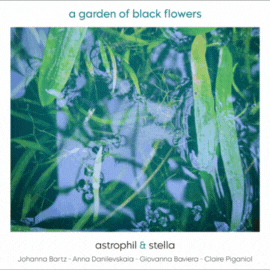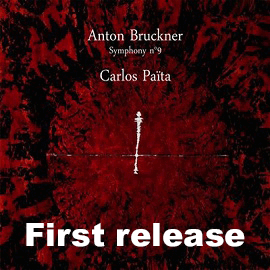Der ukrainische Komponist Boris Lyatoshynsky (1895-1968) war einer der vielen Komponisten, die von den Sowjets wegen ‘Formalismus’ boykottiert wurde. Das trug wesentlich dazu bei, dass er auch heute noch nicht wirklich gut bekannt ist.
Er war ein Pionier der modernen Musik, galt als führender Komponist seines Landes und war auch ein bedeutender Lehrer. Zu seinen Werken gehören drei Opern, fünf Streichquartette, fünf Symphonien, Chormusik und Werke für Soloinstrumente.
In der 1919 unter Reinhold Glière uraufgeführten 1. Symphonie sucht das Ohr nach Ähnlichkeiten und glaubt zunächst bei Scriabin fündig zu werden. Die Musik ist im ersten Satz äußerst farbig, üppig orchestriert und leidenschaftlich. Dasselbe kann für den sehr schönen langsamen Satz und das Finale gesagt werden.
Auf der ersten, vormals bei Marco Polo erschienenen CD ist ebenfalls die symphonische Dichtung Grazhyna zu hören, die der Komponist als ‘symphonische Ballade’ zum Gedenken an den hundertsten Todestag des polnischen Dichters Adam Mickiewicz bezeichnete. Sie gilt als eines der besten Werke des Komponisten und ist danke ihrer Aussagekraft ein Stück mit einem guten Wiedererkennungsgrad.
Die zweite Symphonie entstand zwischen 1935 und 1936 und wurde 1940 revidiert. Der erste Satz ist eher düster gefärbt und sehr aufgewühlt. Darauf folgt ein sehr schöner lyrischer Satz, der dem stürmischen Finale vorausgeht.
1951 komponierte Lyatoshynsky seine Dritte (die er 1954 noch einmal überarbeitete). Der Komponist sagte dazu: « Ich habe mich immer als nationaler Komponist im vollsten Sinne des Wortes gefühlt, und ich werde ein nationaler Komponist bleiben, was ich nicht durch Worte, sondern durch Taten beweisen werde! » Der sehr rhetorische erste Satz ist unmittelbar eingängig und prägt sich dem Hörer kraftvoll ein.
Sehr charakteristisch ist auch das Andante con moto mit markanten Motiven und ansprechenden Stimmungen.
Das Scherzo ist ungestüm und mutet wie ein Tanz der Kobolde an. Darauf folgt ein anfangs sehr positiv wirkendes, optimistisches Finale, aber dieser Optimismus wird von den melancholischen Streichern in Frage gestellt, freilich nicht auf Dauer, denn die Symphonie endet mit kraftvoll aufstrebender Energie.
1963 folgte dann die Vierte Symphonie. Die beiden ersten Sätze sind wiederum sehr erregt und konfliktgeladen, wobei das Lento tenebroso sehr hoffnungslos und resignierend klingt. Umso heftiger bricht dann das Finale herein, das sehr effektvoll ist aber ungewöhnlich ruhig endet.
Die Fünfte, die Slawische entstand drei Jahre vor dem Tod des Komponisten und benutzt Volkmusik aus Russland, Bulgarien and Jugoslawien. Der Mittelsatz ist sehr mysteriös und voll resignativer Trauer. In diese Stimmung bricht das tänzerische, in allen Farben schillernde Finale ein, dessen Coda die Symphonie mit überschäumender Energie zu Ende bringt.
Der amerikanische Dirigent Theodore Kuchar und das Staatliche Symphonieorchester der Ukraine liefern von diesen Symphonien Interpretationen, die kraftvoll sind und die Farbpalette des Komponisten für ein effekt- und ausdrucksvolles Musizieren benutzen. Die Tonaufnahme unterstützt den brillanten Klang der Musik, aber etwa viel Hall nimmt dem Klangbild Wärme und Transparenz.
The Ukrainian composer Boris Lyatoshynsky (1895-1968) was one of the many composers boycotted by the Soviets for ‘formalism’. This contributed greatly to the fact that he is not really known even today.
He was a pioneer of modern music, considered a leading composer in his country, and was also an important teacher. His works include three operas, five string quartets, five symphonies, choral music and works for solo instruments.
In the 1st Symphony, premiered in 1919 under Reinhold Glière, the ear searches for similarities and at first believes to find them in Scriabin. The music is extremely colorful, lushly orchestrated and passionate in the first movement. The same can be said for the very beautiful slow movement and the finale.
The first CD previously released by Marco Polo also features the symphonic poem Grazhyna, which the composer called a ‘symphonic ballad’ commemorating the centenary of the death of the Polish poet Adam Mickiewicz. It is considered one of the composer’s best works and, thanks to its expressiveness, is a piece which is easily to recognize.
The Second Symphony was written between 1935 and 1936 and revised in 1940. The first movement is rather somberly colored and very agitated. It is followed by a very beautiful lyrical movement that precedes the stormy finale.
In 1951 Lyatoshynsky composed his Third (which he revised again in 1954). The composer said of it, « I have always felt myself a national composer in the fullest sense of the word, and I will remain a national composer, which I will prove not by words but by deeds! » The very rhetorical first movement is immediately catchy and makes a powerful impression on the listener.
The Andante con moto is also very characteristic, with striking motives and appealing moods.
The Scherzo is boisterous and seems like a dance of goblins. This is followed by an initially very upbeat, optimistic finale, but this optimism is challenged by the melancholy strings, admittedly not in the long run, as the symphony ends with powerfully soaring energy.
The Fourth Symphony followed in 1963. The first two movements are again very agitated and conflicted, with the Lento tenebroso sounding very hopeless and resigned. The finale then bursts in all the more violently, being very effective but ending unusually quietly.
The Fifth, the Slavonic, was written three years before the composer’s death and uses folk music from Russia, Bulgaria and Yugoslavia. The middle movement is very mysterious and full of resigned sadness. Into this mood breaks the dance-like finale, dazzling in all colors, whose coda brings the symphony to a close with exuberant energy.
American conductor Theodore Kuchar and the State Symphony Orchestra of Ukraine deliver interpretations of these symphonies that are powerful and use the composer’s palette of colors for effective and expressive music-making. The sound recording supports the brilliant sound of the music, but about much reverb takes away warmth and transparency from the sound image.

























